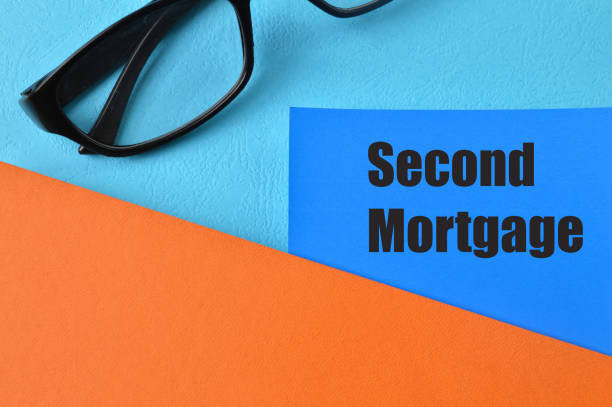
Should I Pay PMI or Take a Second Mortgage?
When buying a home, financing options can be complex, particularly if you cannot make a 20% down payment. Two common solutions are paying Private Mortgage Insurance (PMI) or taking a second mortgage, such as a Home Equity Line of Credit (HELOC) or a piggyback loan. This guide will help you understand the differences between PMI and a second mortgage, their respective advantages and disadvantages, and considerations for deciding which option might be best for your financial situation.
Understanding PMI (Private Mortgage Insurance)
PMI is a type of insurance required by lenders when your down payment is less than 20% of the home’s purchase price. It protects the lender in case you default on the loan. Here’s how it works:
How PMI Works
- Monthly Premiums: PMI is typically paid as a monthly premium added to your mortgage payment.
- Duration: PMI is required until you have 20-22% equity in your home. Once you reach this threshold, you can request to cancel PMI.
- Cost: The cost of PMI varies but generally ranges from 0.3% to 1.5% of the original loan amount per year. The exact rate depends on factors such as loan amount, loan term, and your credit score.
Advantages of PMI
- Lower Down Payment: PMI allows you to buy a home with a down payment as low as 3-5%, making homeownership more accessible.
- Simplicity: The process is straightforward, as it is included in your monthly mortgage payment.
- Potentially Temporary: Once you reach sufficient equity, you can cancel PMI, eliminating the extra cost.
Disadvantages of PMI
- Additional Cost: PMI adds to your monthly housing costs without providing direct benefits to you.
- Non-Tax-Deductible: PMI premiums are generally not tax-deductible, unlike mortgage interest (although tax laws can change).
- Equity Requirement: It may take several years to build up enough equity to cancel PMI, especially if home values decline or your mortgage payments are mostly interest in the early years.
Understanding Second Mortgages
A second mortgage involves borrowing against your home’s equity, either through a HELOC or a piggyback loan. This additional loan is subordinate to your primary mortgage.
Types of Second Mortgages
- HELOC (Home Equity Line of Credit): A HELOC functions like a credit card, where you have a credit limit based on your home equity and can draw funds as needed.
- Piggyback Loan (80-10-10 Loan): A piggyback loan involves taking out a second loan for 10% of the home’s purchase price to avoid PMI, while the first mortgage covers 80% and the down payment covers the remaining 10%.
Advantages of Second Mortgages
- Avoiding PMI: By using a second mortgage, you can avoid paying PMI and potentially save on insurance premiums.
- Flexible Access to Funds (HELOC): A HELOC provides flexible access to funds for home improvements or other expenses.
- Interest Deduction: Interest on second mortgages may be tax-deductible, providing potential tax benefits.
Disadvantages of Second Mortgages
- Higher Interest Rates: Second mortgages typically have higher interest rates than primary mortgages, increasing your overall borrowing costs.
- Repayment Complexity: Managing two mortgage payments can be more complicated than a single mortgage with PMI.
- Risk of Foreclosure: Defaulting on a second mortgage can result in foreclosure, risking your home.
Comparing Costs
To decide whether to pay PMI or take a second mortgage, you need to compare the overall costs of both options. Consider the following:
Monthly Payments
- PMI Payments: Calculate the monthly PMI premium and add it to your primary mortgage payment.
- Second Mortgage Payments: Determine the monthly payment for a HELOC or piggyback loan and combine it with your primary mortgage payment.
Total Interest
- PMI Interest: PMI itself does not accrue interest, but the primary mortgage does. Consider how long you will pay PMI before canceling it.
- Second Mortgage Interest: Calculate the interest over the life of the second mortgage. HELOCs may have variable rates, making cost predictions more complex.
Loan Terms
- PMI Duration: Estimate how long it will take to build enough equity to cancel PMI. Faster home appreciation or extra principal payments can shorten this period.
- Second Mortgage Terms: Consider the term length of the second mortgage. Shorter terms may have higher monthly payments but lower overall interest costs.
Financial Considerations
When deciding between PMI and a second mortgage, evaluate your overall financial situation and future plans:
Cash Flow
- Current Budget: Assess how each option affects your monthly budget. Higher payments may strain your finances, while lower payments might provide more flexibility.
- Emergency Fund: Ensure you maintain an adequate emergency fund. Stretching your budget too thin can leave you vulnerable to unexpected expenses.
Credit Score
- Impact on Credit: Both PMI and a second mortgage affect your credit score differently. PMI does not impact your credit, while a second mortgage adds to your debt load, which can affect your credit utilization ratio and score.
- Approval Requirements: Lenders may have different credit score requirements for PMI versus second mortgages. Ensure you meet the criteria for your chosen option.
Future Plans
- Homeownership Duration: If you plan to stay in the home long-term, building equity and canceling PMI might be more beneficial. For short-term ownership, a second mortgage might be more advantageous.
- Potential Refinancing: Consider if you might refinance in the future. Refinancing could help eliminate PMI or consolidate loans, impacting your decision.
Case Study: PMI vs. Second Mortgage
Let’s consider a practical example to illustrate the decision-making process:
Scenario
- Home Purchase Price: $300,000
- Down Payment: $30,000 (10%)
- Loan Amount: $270,000
- PMI Rate: 0.5% annually
- Second Mortgage Rate: 5% annually
PMI Calculation
- PMI Annual Cost: $270,000 x 0.5% = $1,350
- Monthly PMI Payment: $1,350 / 12 = $112.50
Second Mortgage Calculation (Piggyback Loan)
- Second Loan Amount: $30,000
- Monthly Payment (10-year term): Using a mortgage calculator, the monthly payment for a $30,000 loan at 5% interest over 10 years is approximately $318.
Comparison
-
Monthly Payments:
- With PMI: $270,000 mortgage payment + $112.50 PMI
- With Second Mortgage: $270,000 mortgage payment + $318 second mortgage payment
-
Total Interest Costs:
- PMI: No interest on PMI itself, but higher total payments until PMI cancellation.
- Second Mortgage: Higher interest due to a higher rate on the second loan.
Conclusion
Deciding whether to pay PMI or take a second mortgage depends on various factors, including your financial situation, future plans, and the specifics of each option. PMI offers simplicity and a lower initial cost but adds to your monthly expenses until you can cancel it. A second mortgage helps avoid PMI and can provide flexible funds but often comes with higher interest rates and added complexity. By carefully analyzing costs, considering your financial health, and planning for the future, you can make an informed decision that aligns with your homeownership goals.


